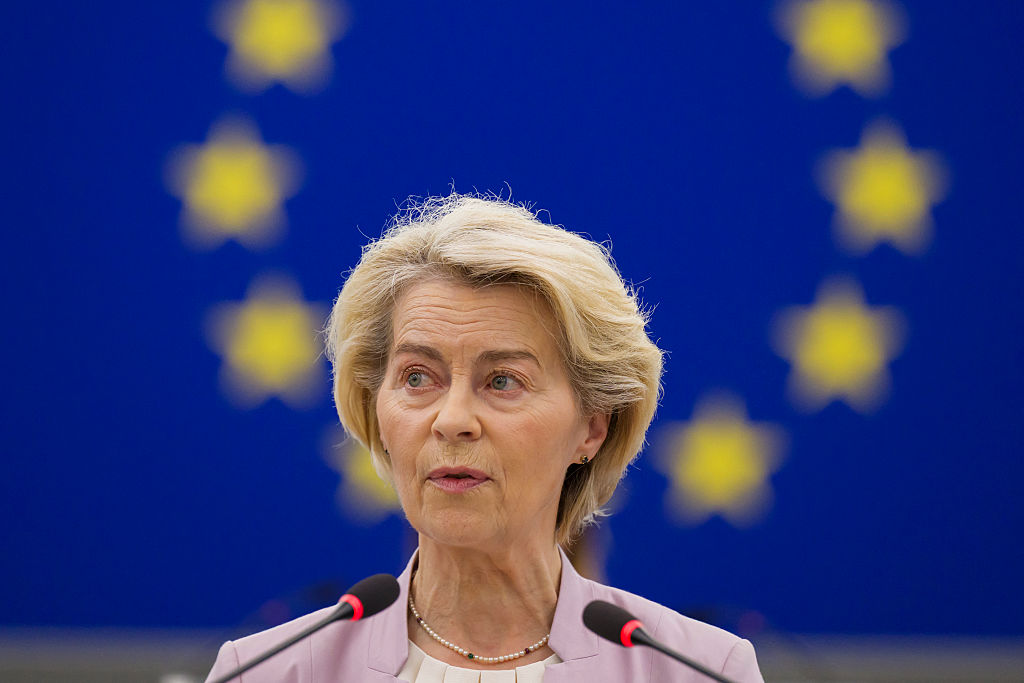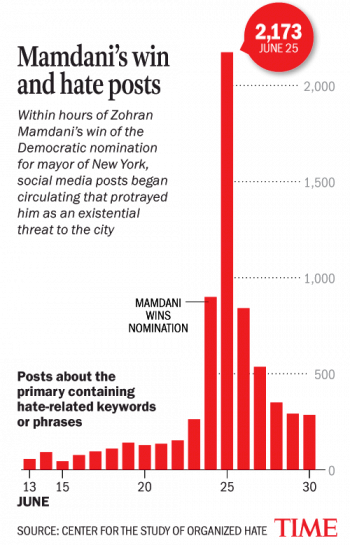Why the EU Should Sign Another ‘Mini Deal’ with Trump

When it comes to the transatlantic economy, clarity matters more than perfection. And right now, clarity is in dangerously short supply.
European business leaders are hungry for stability in a time of mounting uncertainty. They’re watching the clock—and so should we. With a new Aug. 1 deadline now looming, the U.S. has threatened to impose steep, country-specific tariffs on EU goods.
[time-brightcove not-tgx=”true”]In April, President Donald Trump imposed a 20% import tax on all EU-made products. And in May, displeased with the status of tariff negotiations, Trump threatened a whopping 50% tax on all imports from the EU. Now, the President has reportedly proposed a dialed-back 10% baseline tariff on all EU goods, with some exceptions for sectors such as aircraft and spirits.
European leaders have responded with a mix of urgency and division. Publicly, top officials have signaled a desire to reach a deal and avoid escalation. Privately, however, talks have revealed fractures within the bloc. Export-driven economies like Germany and Ireland are leading the way for a quick resolution to avoid lasting damage, especially in sectors like autos, chemicals, and pharmaceuticals. Others, like France and Spain, appear more dug-in, urging the EU not to agree to a deal that feels unbalanced or overly one-sided on tariffs. These differences have tested the bloc’s unity and underscore the uneven stakes of the negotiation.
The European Commission and its president, Ursula von der Leyen, are navigating a tightrope–balancing a unified negotiating stance with the political and economic pressures facing individual countries. Europe faces a stark choice: if it wants a deal with the U.S., it must accept some baseline tariffs, presumably at least 10%. A negotiated agreement could, however, limit potentially sector-specific tariffs—provided that real progress is made on long-standing non-tariff barriers.
But ultimately, a limited deal is better than no deal, and it’s within reach. To cool tensions and reduce tariff threats, negotiators should focus on areas where progress is achievable. Digital trade, regulatory alignment, the EU’s carbon border adjustment mechanism, and sector-specific issues like autos, shipbuilding, and steel are all on the table.
Leaders on both sides of the Atlantic would be wise to embrace another “mini deal,” similar to the one signed in June. Perfect should not be the enemy of good—especially when the cost of failure could be so high.
If no deal is reached by August, there is a real danger that President Trump will impose high tariffs. In response, the EU will retaliate with a broad range of countermeasures targeting major American exports across multiple industries. The net effect will be damaging to the transatlantic relationship, which encompasses more than $2 trillion in annual trade and supports a combined $5 trillion footprint when investment and jobs are included. This will lead to disrupted supply chains, job losses, and increased costs, hurting businesses and consumers on both sides of the Atlantic.
We won’t get a sweeping agreement. But we do need a clear, credible path forward—something tangible that signals both sides are serious about managing trade tensions and regulatory challenges. Business leaders navigating global headwinds need to know what’s coming. What they need now is a signal that diplomacy still works.
I saw firsthand what happens when ambition outweighs execution. That was the case with the Transatlantic Trade and Investment Partnership (TTIP), the last major U.S.–EU trade effort in 2016. Unfortunately, those talks collapsed under the weight of their own ambition.
We don’t need to repeat that mistake.
The recent U.S.–UK trade agreement, known as the “Economic Prosperity Deal,” is instructive. It wasn’t transformative, but it provided breathing room. We avoided high barriers and stabilized trade relations. While it brought no major wins and is fair to call a “mini deal,” it still achieved the kind of modest progress that matters.
The negotiations between Europe and the U.S. can help bolster our broader strategic, security, and economic partnership. The NATO Summit arguably gave that momentum a boost, with Europe agreeing to meet a new threshold for defense spending. Now let’s hope the two sides build on that progress.
As one who has long advocated for comprehensive U.S.-EU trade talks, I’ll admit it’s hard for me to swallow a “mini deal” as an ideal outcome. But in this context, and at this period in history, it’s exactly what we need to stabilize the transatlantic relationship. A deal would also send an important message to strategic competitors like China that the U.S. and Europe are a formidable partnership not shaken by a complicated political and economic environment. That matters.
What I’m hearing from business leaders is clear: they’re not asking for perfection. They’re asking for predictability. They want to know that, no matter their differences, Europe and the U.S. can still work togetherr—and not play chicken at the edge of a tariff cliff. Companies across sectors—from automakers to beverage producers—are already warning of price increases, supply disruptions, and operational shifts if trade tensions escalate further.
We’ve been here before. Let’s not make the same mistake again.



